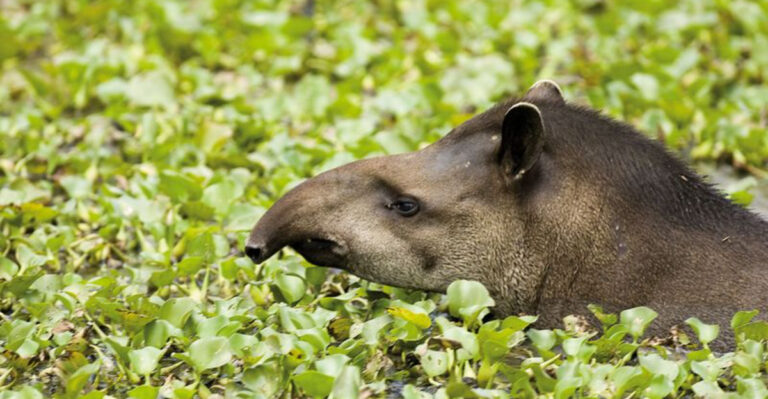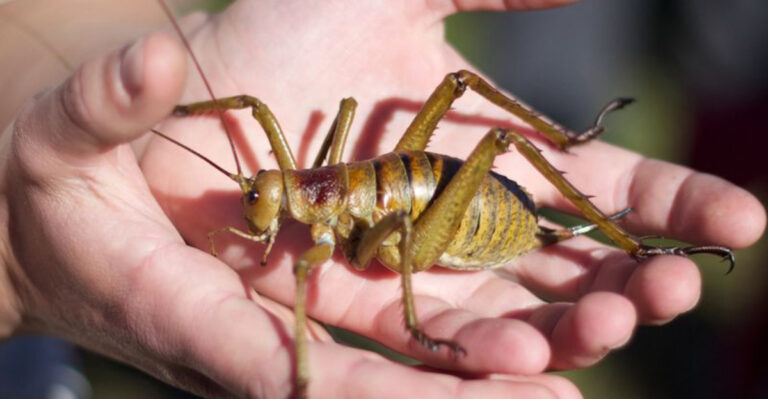April 27 Is Tapir Day: 16 Wild Facts That Prove Tapirs Are Nature’s Hidden Treasures
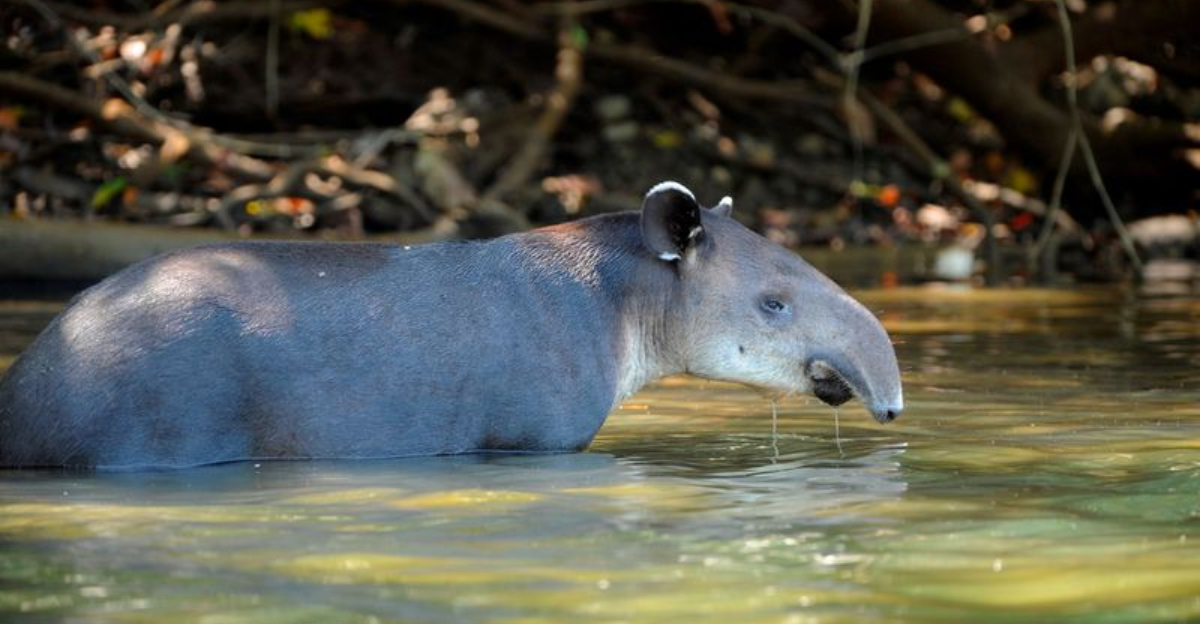
You might be surprised to discover that tapirs, with their unique noses and sturdy bodies, are among nature’s hidden gems.
These odd but lovable creatures resemble a mix between a pig and an anteater, yet they belong to their own special family.
On April 27, we celebrate their significance and learn why they deserve more attention!
1. Tapir’s Ancient Lineage
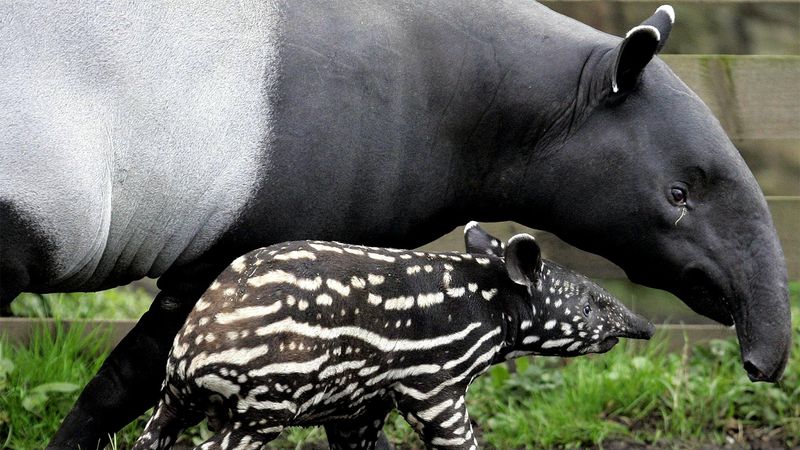
Did you know tapirs are ancient relics of the animal kingdom? Their lineage dates back millions of years, surviving through the ages with their unique characteristics.
Their prehistoric past adds a compelling layer to their story, inviting us to ponder nature’s timeline. Next time you see a tapir, remember: you’re glimpsing a living testament to ancient Earth.
2. Unique Nose Functionality

Tapirs boast a remarkable snout that acts like a mini elephant trunk. This versatile nose is perfect for grabbing leaves and twigs, showcasing nature’s innovation.
It’s like having a built-in tool for foraging! As they wander through lush forests, their noses do the heavy lifting, proving essential for survival.
This quirky adaptation not only aids in feeding but also adds to their charm. Imagine exploring the jungle with such a handy feature!
3. Tapir’s Subtle Communication
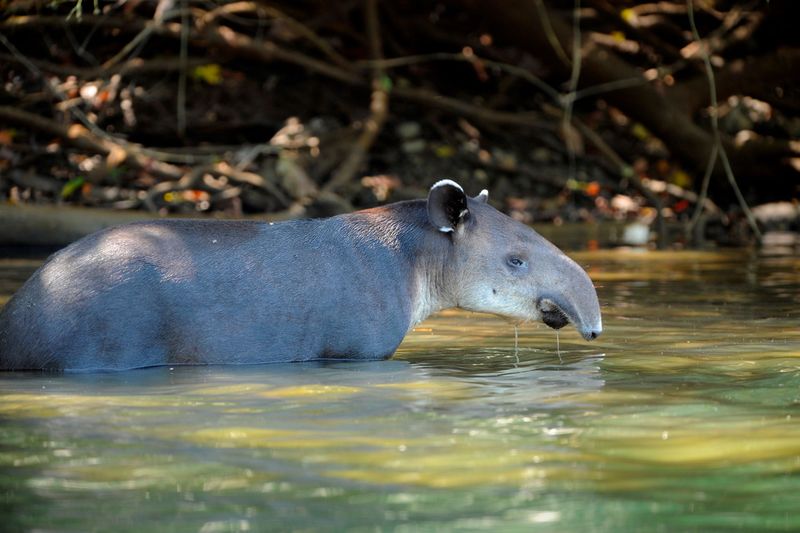
Ever heard a tapir communicate? These gentle creatures prefer subtlety, using soft whistles and squeaks to converse. Forget loud roars; tapirs are all about gentle exchanges.
This delicate communication style suits their tranquil nature, creating a serene forest ambience. It’s like a whispering world of secrets among leaves.
Next time you find yourself in a forest, listen closely – you might just hear the quiet dialogue of tapirs echoing through the trees.
4. Tapir’s Camouflage Skills
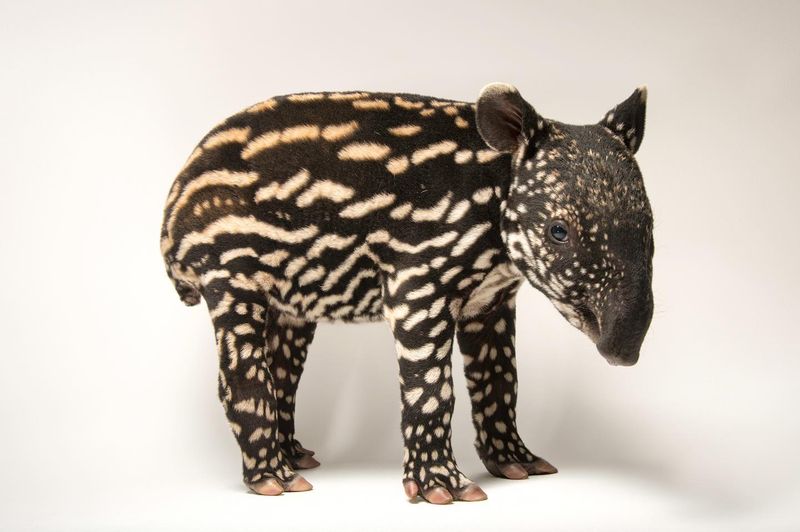
Mother Nature has gifted young tapirs with an extraordinary coat. These baby tapirs sport stripes and spots, mimicking sunlight filtering through forest leaves.
It’s like wearing a perfect disguise to stay hidden from predators! This camouflage keeps them safe while they explore their environment.
As they grow, their coat changes, but the memory of their early days remains. It’s a brilliant example of nature’s protective creativity – a walking illusion in the dappled shade.
5. Tapirs And Water Love
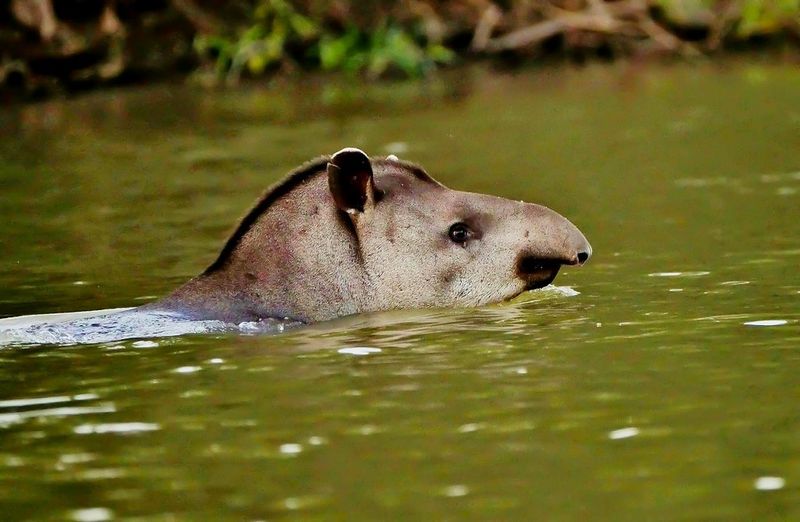
Tapirs have an aquatic side, delighting in swims and water play.
Their love for water is more than just a pastime – it’s essential for their wellbeing. In tropical climates, water provides relief and relaxation, helping them cool down.
This affinity for aquatic environments showcases their playful spirit, a delightful sight for any nature enthusiast.
6. Tapir Diet Diversity
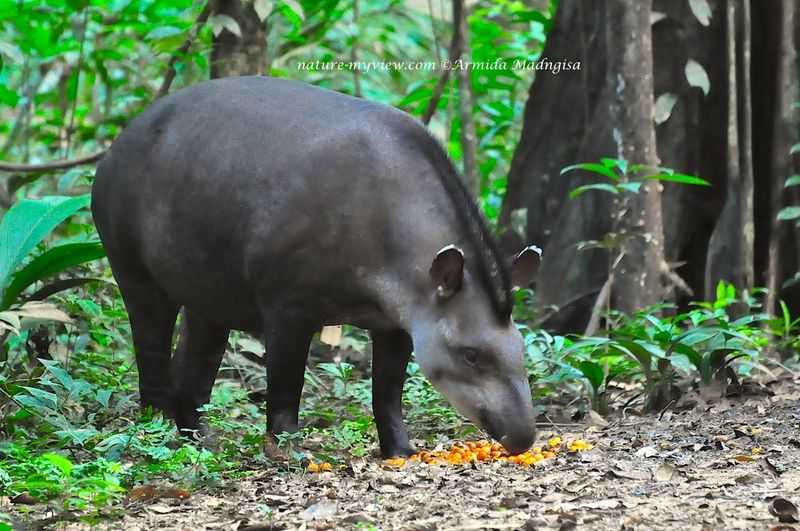
Tapirs are nature’s gourmet foragers, enjoying a diverse diet ranging from fruits to leaves. Imagine them wandering through forests like connoisseurs at a banquet.
Their robust appetite helps maintain healthy ecosystems by dispersing seeds.
With every meal, tapirs contribute to nature’s balance, a living link in an intricate web. It’s a dining experience that benefits both the eater and the environment.
7. Tapir Conservation Efforts
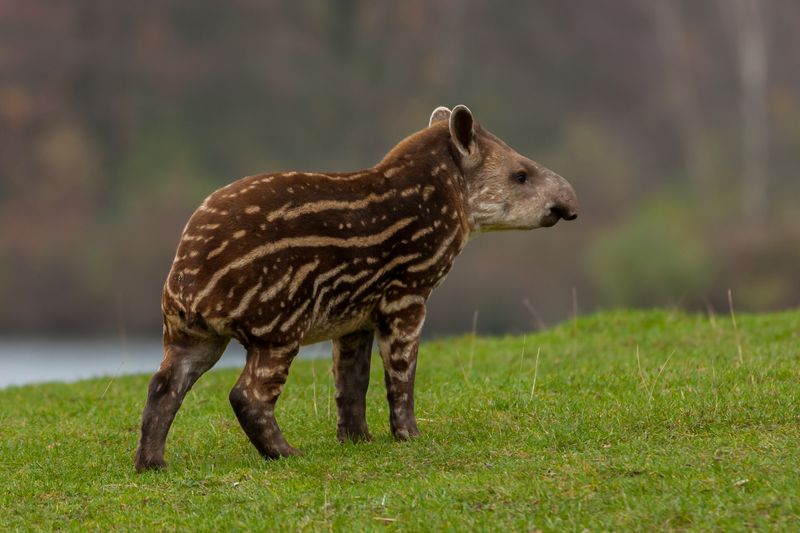
Dedicated conservation efforts are underway to protect tapirs from threats like habitat loss. Imagine passionate individuals rallying to support these gentle giants, creating safe havens in the wild.
Their work helps tapirs thrive, ensuring future generations can witness these remarkable creatures.
By supporting conservation, we become part of a vital mission to protect our planet’s natural heritage.
8. Tapir’s Gentle Nature

Tapirs exude an aura of tranquility, their gentle demeanor endearing them to those who encounter them. Picture a tapir wandering peacefully through the forest, embodying calmness.
This serene nature makes them approachable, a trait admired by observers. It’s like meeting a gentle guardian of the woods.
Despite their size, they navigate their habitat with grace, leaving a sense of wonder in their wake.
9. Tapir Species Variety
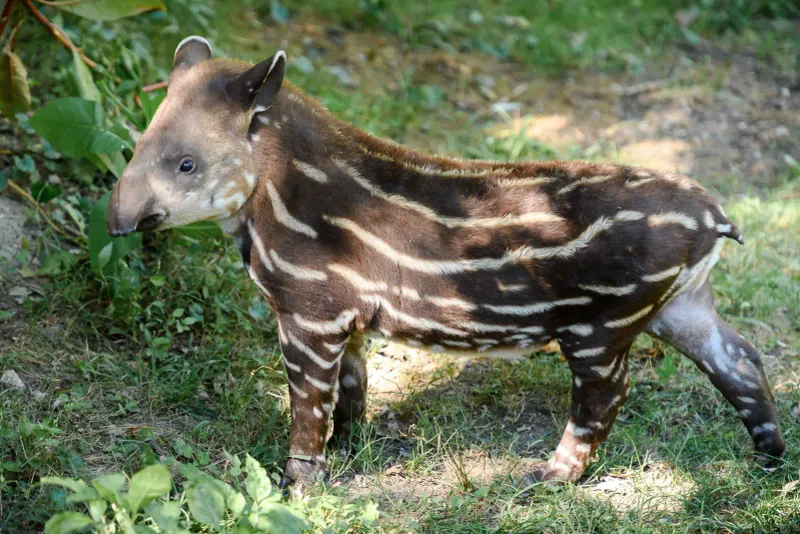
Tapirs come in four distinct species, each with unique traits. From the Malayan tapir with its striking black-and-white pattern to the Brazilian tapir thriving in South American forests, diversity abounds.
This variety enriches the animal kingdom, showcasing evolution’s artistry. Imagine exploring different habitats, each hosting a tapir species adapted to its environment.
10. Historical Significance Of Tapirs

Tapirs hold a special place in history, revered by ancient cultures. Imagine them featured in indigenous art, symbolizing strength and wisdom.
These cultural connections highlight tapirs’ importance beyond biology. Their presence in myths and stories enriches our understanding, bridging past and present.
11. Tapir’s Role In Ecosystem
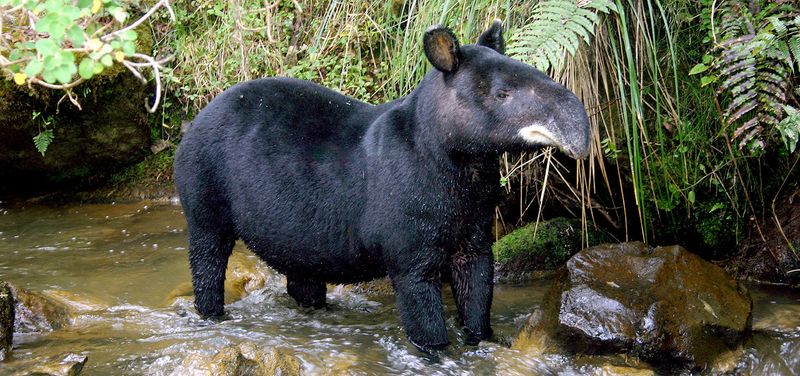
Tapirs play an essential role in their ecosystems, acting as gardeners of the forest. Their foraging habits promote plant diversity, ensuring the health of their habitat.
This ecological service connects them to countless species, emphasizing the interconnectedness of life. By supporting tapirs, we support entire ecosystems, underlining their significance.
12. Tapir’s Unique Feet

Tapirs sport intriguing feet with three toes on each hind foot and four on the front, like nature’s quirky footwear design.
These unique feet provide stability on soft forest floors, helping them navigate tricky terrains. Visualize them padding quietly through mud, their steps purposeful yet gentle.
Next time you’re in the woods, imagine walking with such fascinating feet!
13. Tapir’s Playful Personality
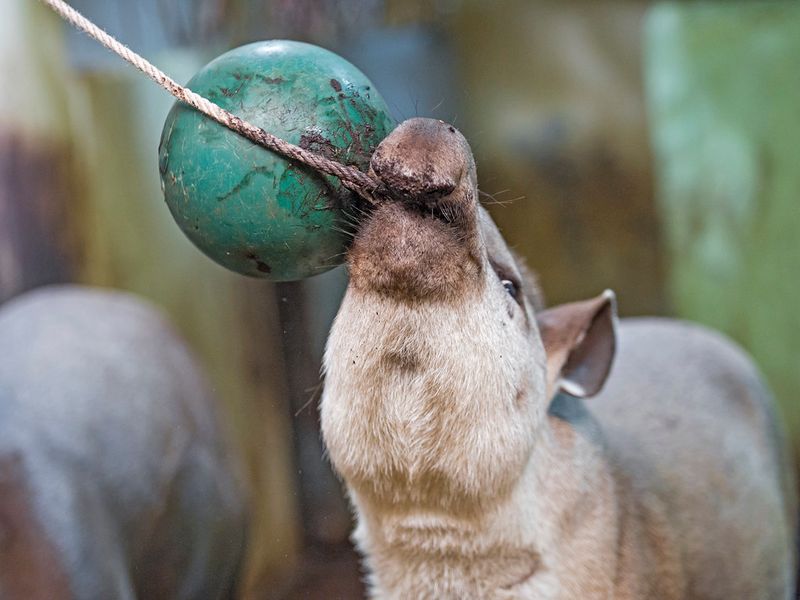
Though often seen as solitary, tapirs have a playful side, enjoying games with objects like balls. Imagine a tapir nudging a ball around, showcasing its lighter mood.
This playful behavior reveals their curious nature, adding a spark of joy to their typical routine. It’s a surprise that breaks the misconception of them being overly reserved.
14. Tapir’s Nightly Adventures
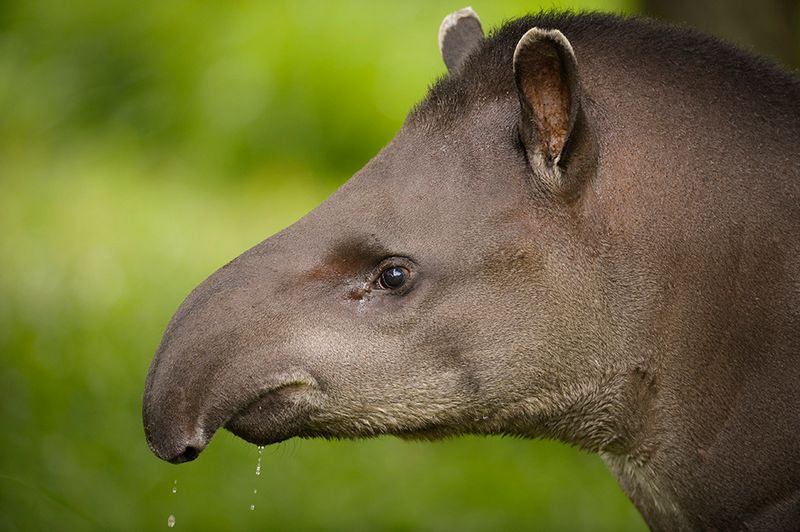
As night falls, tapirs become explorers of the dark, their nocturnal nature leading them on moonlit adventures. Picture them moving silently through forest shadows, a part of the mysterious night world.
This behavior helps them avoid predators and navigate cooler temperatures, showcasing their adaptability.
The next time you gaze at a night sky, imagine tapirs embarking on their secretive journey.
15. Social Life Of Tapirs

Contrary to their solitary reputation, tapirs occasionally form social bonds, especially mothers with young. Picture a family group, moments of tenderness and care shared among them.
These interactions are heartwarming, revealing a side of tapirs often unseen. It’s like a hidden family gathering, filled with gentle connections.
16. Tapir’s Resilience And Adaptability
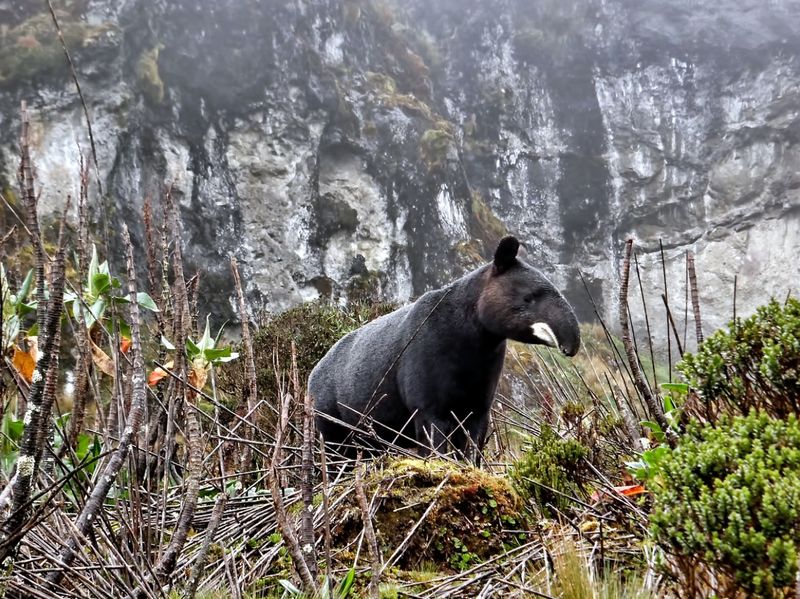
Resilient and adaptable, tapirs withstand various environmental challenges. Picture them thriving across diverse habitats, from swamps to mountainous regions.
Their adaptability is key to survival, showcasing nature’s ingenuity. Despite facing threats, they persist, reflecting a spirit of quiet determination.

